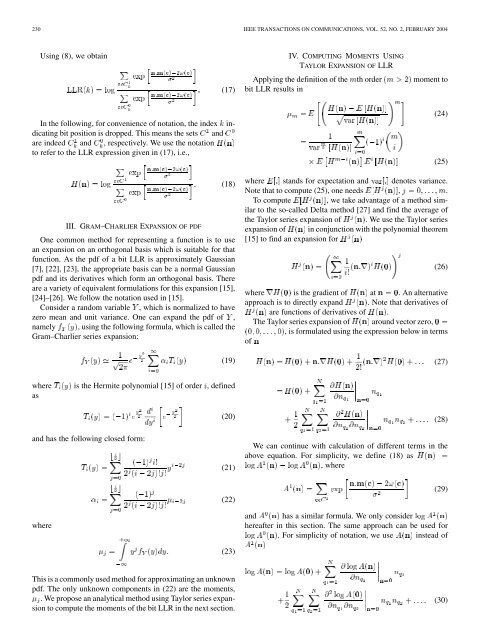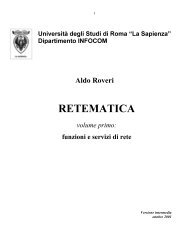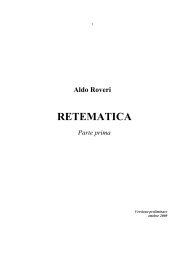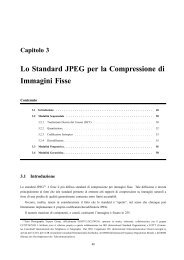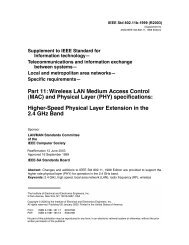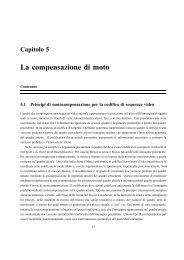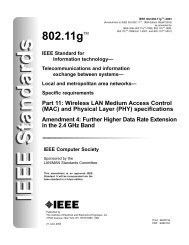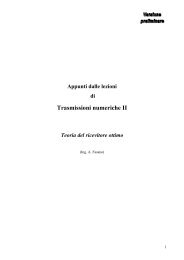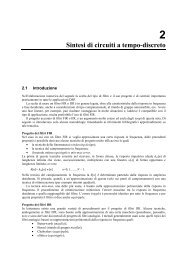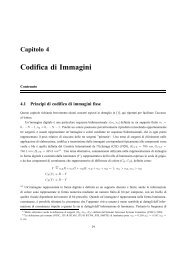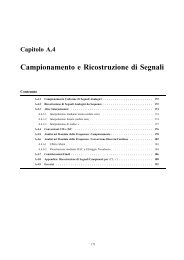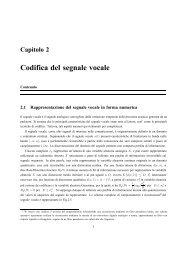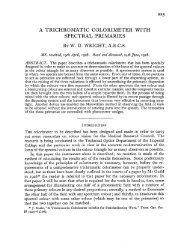An Analytical Method for Approximate Performance ... - IEEE Xplore
An Analytical Method for Approximate Performance ... - IEEE Xplore
An Analytical Method for Approximate Performance ... - IEEE Xplore
Create successful ePaper yourself
Turn your PDF publications into a flip-book with our unique Google optimized e-Paper software.
230 <strong>IEEE</strong> TRANSACTIONS ON COMMUNICATIONS, VOL. 52, NO. 2, FEBRUARY 2004<br />
Using (8), we obtain<br />
(17)<br />
In the following, <strong>for</strong> convenience of notation, the index indicating<br />
bit position is dropped. This means the sets and<br />
are indeed and , respectively. We use the notation<br />
to refer to the LLR expression given in (17), i.e.,<br />
III. GRAM–CHARLIER EXPANSION OF PDF<br />
(18)<br />
One common method <strong>for</strong> representing a function is to use<br />
an expansion on an orthogonal basis which is suitable <strong>for</strong> that<br />
function. As the pdf of a bit LLR is approximately Gaussian<br />
[7], [22], [23], the appropriate basis can be a normal Gaussian<br />
pdf and its derivatives which <strong>for</strong>m an orthogonal basis. There<br />
are a variety of equivalent <strong>for</strong>mulations <strong>for</strong> this expansion [15],<br />
[24]–[26]. We follow the notation used in [15].<br />
Consider a random variable , which is normalized to have<br />
zero mean and unit variance. One can expand the pdf of ,<br />
namely , using the following <strong>for</strong>mula, which is called the<br />
Gram–Charlier series expansion:<br />
(19)<br />
where is the Hermite polynomial [15] of order , defined<br />
as<br />
and has the following closed <strong>for</strong>m:<br />
where<br />
(20)<br />
(21)<br />
(22)<br />
(23)<br />
This is a commonly used method <strong>for</strong> approximating an unknown<br />
pdf. The only unknown components in (22) are the moments,<br />
. We propose an analytical method using Taylor series expansion<br />
to compute the moments of the bit LLR in the next section.<br />
IV. COMPUTING MOMENTS USING<br />
TAYLOR EXPANSION OF LLR<br />
Applying the definition of the<br />
bit LLR results in<br />
th order moment to<br />
(24)<br />
(25)<br />
where stands <strong>for</strong> expectation and denotes variance.<br />
Note that to compute (25), one needs , .<br />
To compute , we take advantage of a method similar<br />
to the so-called Delta method [27] and find the average of<br />
the Taylor series expansion of . We use the Taylor series<br />
expansion of in conjunction with the polynomial theorem<br />
[15] to find an expansion <strong>for</strong><br />
(26)<br />
where is the gradient of at . <strong>An</strong> alternative<br />
approach is to directly expand . Note that derivatives of<br />
are functions of derivatives of .<br />
The Taylor series expansion of around vector zero,<br />
, is <strong>for</strong>mulated using the expression below in terms<br />
of<br />
(27)<br />
(28)<br />
We can continue with calculation of different terms in the<br />
above equation. For simplicity, we define (18) as<br />
, where<br />
(29)<br />
and has a similar <strong>for</strong>mula. We only consider<br />
hereafter in this section. The same approach can be used <strong>for</strong><br />
. For simplicity of notation, we use instead of<br />
(30)


